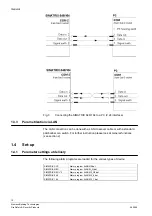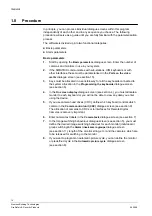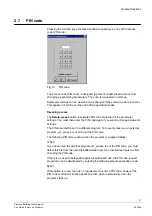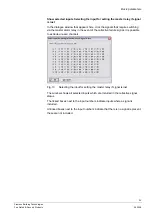
General
14
Siemens Building Technologies
Fire Safety & Security Products
06.2008
1.8 Procedure
In principle, you can process individual dialogue screens within this program
independently of each other and in any sequence you choose. The following
procedure will serve as a guide until you are fully familiar with the parameterisation
process.
The software is divided up into two functional categories:
z
Basic parameters
z
Alarm parameters
Basic parameters
1.
Start by opening the
Basic
parameters
dialogue screen. Enter the number of
cameras and monitors in use in your system.
2.
If the SIMATRIX communicates with sub-stations, IVM keyboards or with
other interfaces, these must be parameterised in the
Ports
on
the
video
matrix
dialogue screen (see section 15).
3.
Keys must be allocated in a sensible way for all the keyboards connected to
the system allocation in the
Programming
the
keyboards
dialogue screen
(see section 6).
4.
In the
On
screen
display
dialogue screen (see section 4), you must allocate a
monitor to each keyboard or you will not be able to view any data you enter
using the device.
5.
If you use camera head drives (CDC), define which keyboard controls which
camera in the
Camera control unit (CDC)
dialogue screen
(see section 9).
The allocation of cameras to CDCs or to interfaces for Remote Digital
Cameras is also very important.
6.
Enter camera text labels in the
Camera texts
dialogue screen (see section 7)
7.
In the Image switching behavoiour dialogue screen (see section 5), you must
define the desired image switching behaviour for each monitor (individual or
group switching/in the
Alarm lines/camera groups
dialogue screen
(see section 11), length of the monitor string, etc.) and the cameras, which are
to be released for switching to the monitor.
8.
If you want to program an automatic picture cycle, you can define the monitor
or predefined cycle in the
Automatic picture cycle
dialogue screen
(see section 8).





























